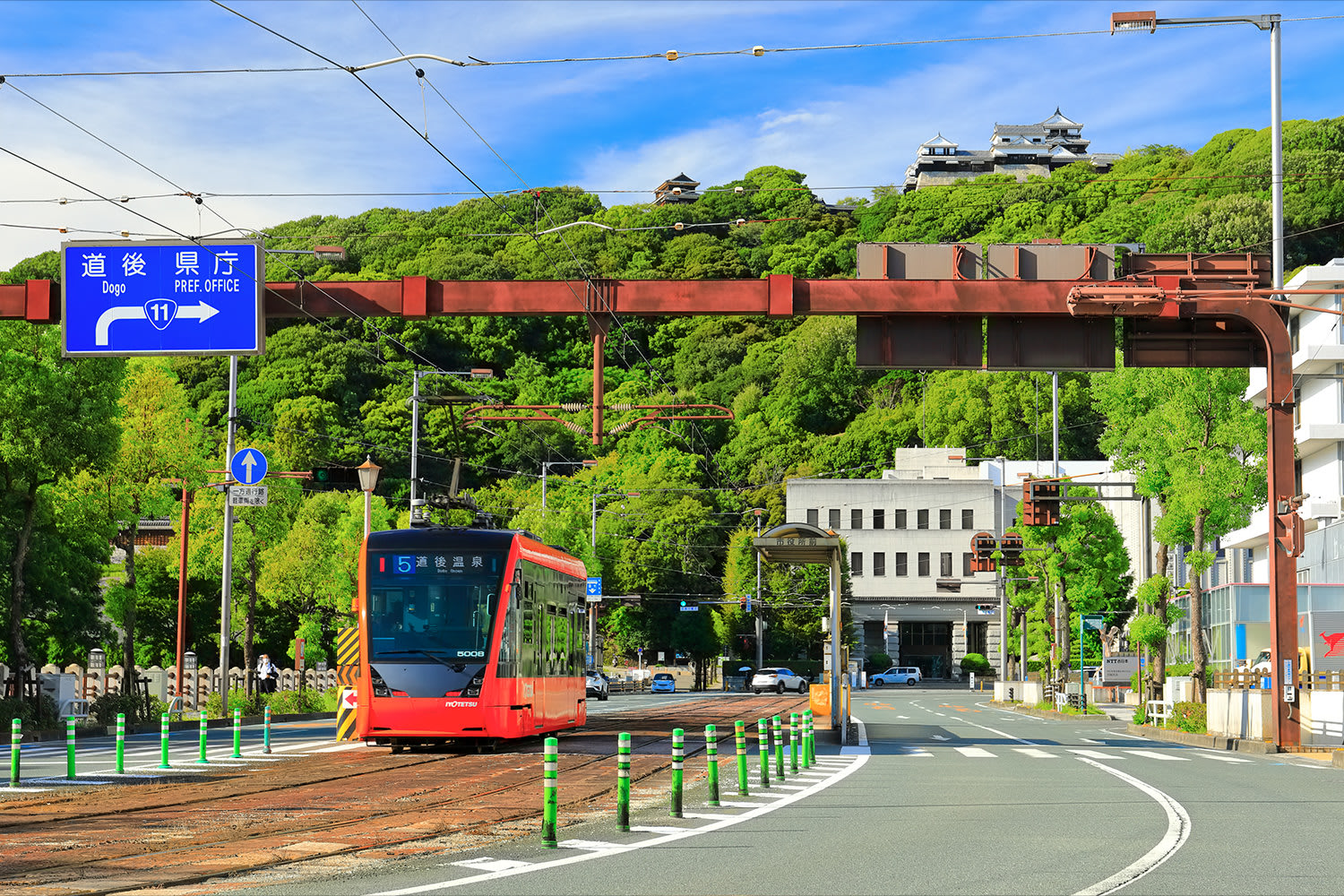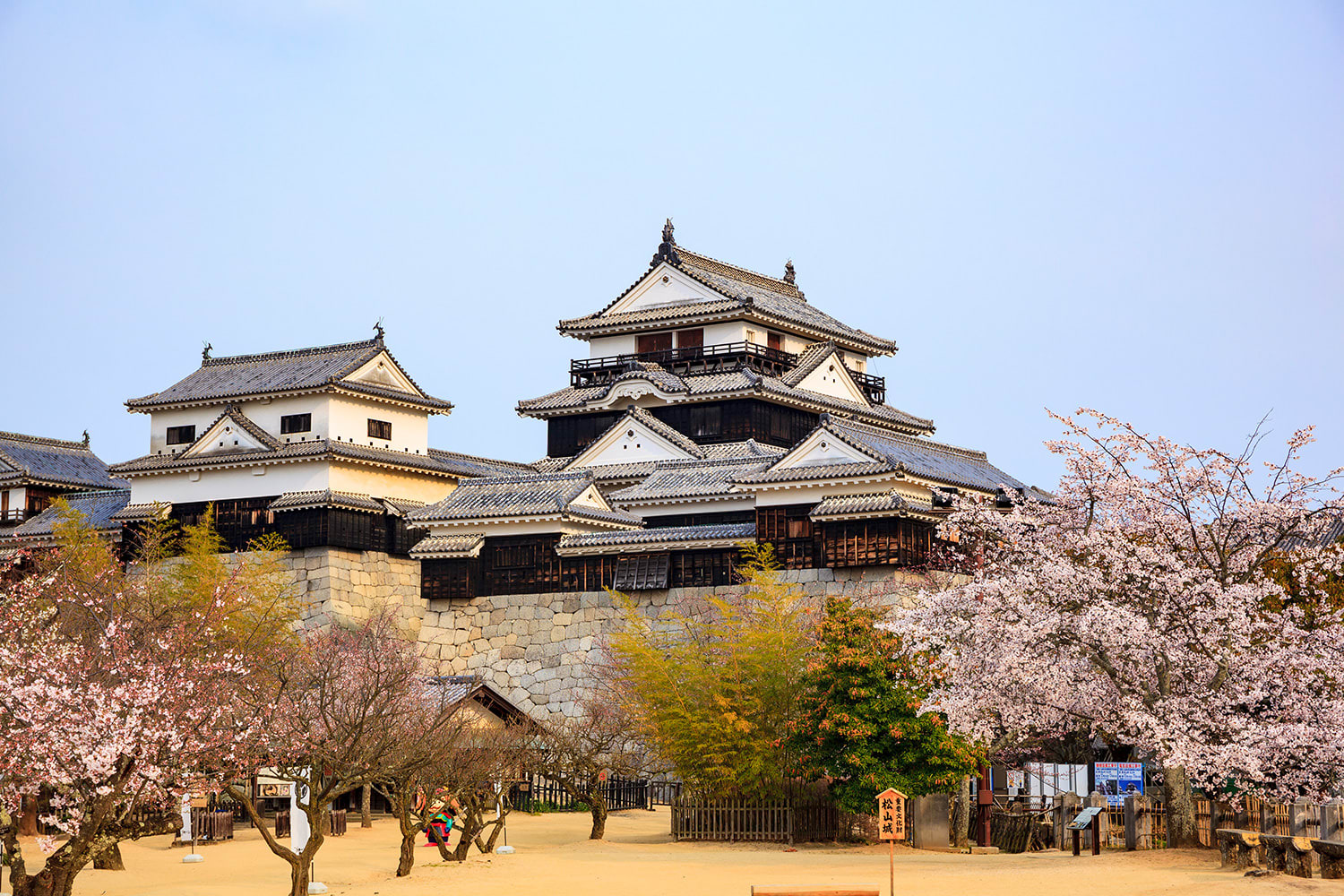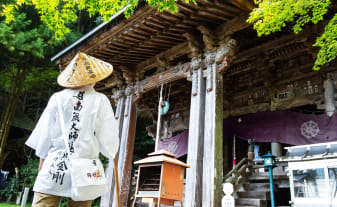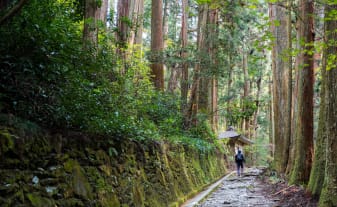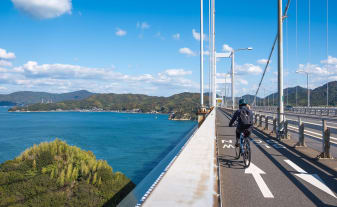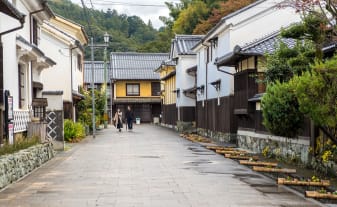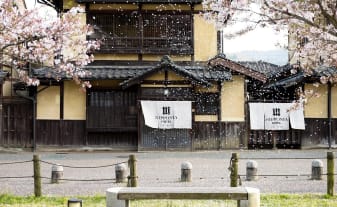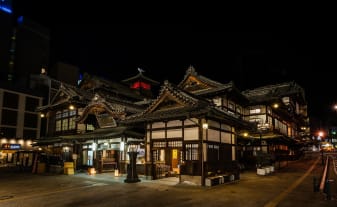 STORIES & GUIDES
STORIES & GUIDES
Ehime’s Top Attractions: The Must-Sees of the Chuyo, Toyo, and Nanyo Regions

Ehime Prefecture encompasses three distinct regions, each offering a variety of experiences and attractions. At the heart of Ehime is Chuyo, home to the capital Matsuyama. In addition to being an ideal base for exploring the prefecture, the city has some of Ehime’s most popular attractions, such as the ancient hot springs of Dogo Onsen and Matsuyama Castle, a leading example of seventeenth-century Japanese castle architecture.
To the northeast is Toyo, where you can enjoy the scenic Seto Inland Sea coastline and the Shimanami Kaido, an iconic cycling route connecting Ehime and Hiroshima via numerous small islands. In the southwest is Nanyo, where quaint castle towns and preserved historical buildings offer a nostalgic journey into their prosperous histories. Build ample time into your itinerary to experience these top attractions and make your own unique discoveries beyond them.
-
Chuyo: Discover the charms of Matsuyama
Matsuyama is the capital and biggest city of Ehime, easy to access thanks to its international airport and ferry links with Kyushu and destinations on the Honshu main island. Dogo Onsen is one of its most popular attractions—a hot spring with a 3,000-year-old history, believed to be the oldest in Japan. Throughout the Dogo Onsen area, public bathhouses and footbaths offer abundant opportunities to soak in the rejuvenating waters. The main bathhouse, Dogo Onsen Honkan, is said to have inspired the bathhouse depicted in Studio Ghibli’s acclaimed film, Spirited Away.
A road behind Dogo Onsen Honkan, leads to Isaniwa Shrine, a striking vermillion building adorned with beautiful wood carvings and gold leaf gilding. The shrine is dedicated to Hachiman, the deity of war, and depictions of warriors and warfare are displayed in its hallways. Several Important Cultural Properties can be found on its grounds, such as its main hall and two-storied gate.
Matsuyama Castle was built in the early seventeenth century and overlooks Matsuyama from a hilltop near the center of the city. It is one of twelve Japanese castles to have an original keep built before the end of the Edo period (1603–1867). The keep houses displays of artifacts and documents through which you can learn about the castle’s history. Climb the stairs to the top floor, and you will have sweeping views of downtown Matsuyama and the Seto Inland Sea. -
Toyo: Cycling and island hopping
Cyclotourism is a big draw for Ehime, which has dedicated routes and facilities to help cyclists make the most of their time in the prefecture. One of the best-known cycling routes in Japan is the Shimanami Kaido which runs between Imabari in Ehime and Onomichi in Hiroshima. The approximately 70 km route connects six islands in the Seto Inland Sea, affording spectacular views and the opportunity to slow down and enjoy island life.
Walk or cycle the Kurushima Kaikyo Bridge, one of the world’s longest suspension bridges, connecting Oshima Island to Imabari. Walking along the pedestrian path, you might feel like you are floating above the Seto Inland Sea. Join a boat tour to see the bridge from below to fully appreciate its size. Tours also visit the famed tidal whirlpools of the Kurushima Strait.
At the southernmost tip of Oshima Island, Kirosan Observatory Park has some of the best views along the Shimanami Kaido. Built over 300 m above sea level on Mt. Kirosan, the observatory affords views of the islands of the Seto Inland Sea and the bridges that connect them. It was designed by famed Japanese architect Kengo Kuma, to conform with the shape of the mountain rather than standing out on top of it as an observatory normally would. -
Nanyo: Explore traditional townscapes and opulent gardens
The town of Uchiko has a well-preserved historic district lined with buildings in styles from a span of almost 300 years, from the Edo period (1603–1867) to the Taisho era (1912–1926). Strolling past the chronologically varied architecture is like walking through history. The town had a thriving wax, silk, and washi trade, and many of the buildings reflect this heritage.
Neighboring Uchiko to the south, Ozu is a picturesque castle town that has become a symbol of heritage preservation and revitalization efforts. Traditional and historical buildings including its castle have been given new life thanks to community-led conservation efforts. Experience Ozu’s history through cultural activities and stays at the restored Ozu Castle and renovated merchant houses.
Take a pleasant stroll from Ozu Castle, through retro streets to Garyu Sanso, a luxurious riverside villa from the Meiji period (1868–1912). It was designed and built to blend seamlessly with the surrounding nature. The beautiful moss-covered grounds create a serene escape where time seems to slow. Admire the main building, which is a masterful take on traditional rural architecture, and gaze out across the Hijikawa River from the tea house, which is built on wooden supports set into the cliffside.
-
Walking & Hiking
-
Eastern Ehime (Toyo)
-
Museums & Galleries
-
Family Friendly
-
Hot Springs
-
Guided Tours
-
Cultural Heritage
-
Historic Sites & Monuments
-
Top Attractions
-
Sustainability & Conservation
